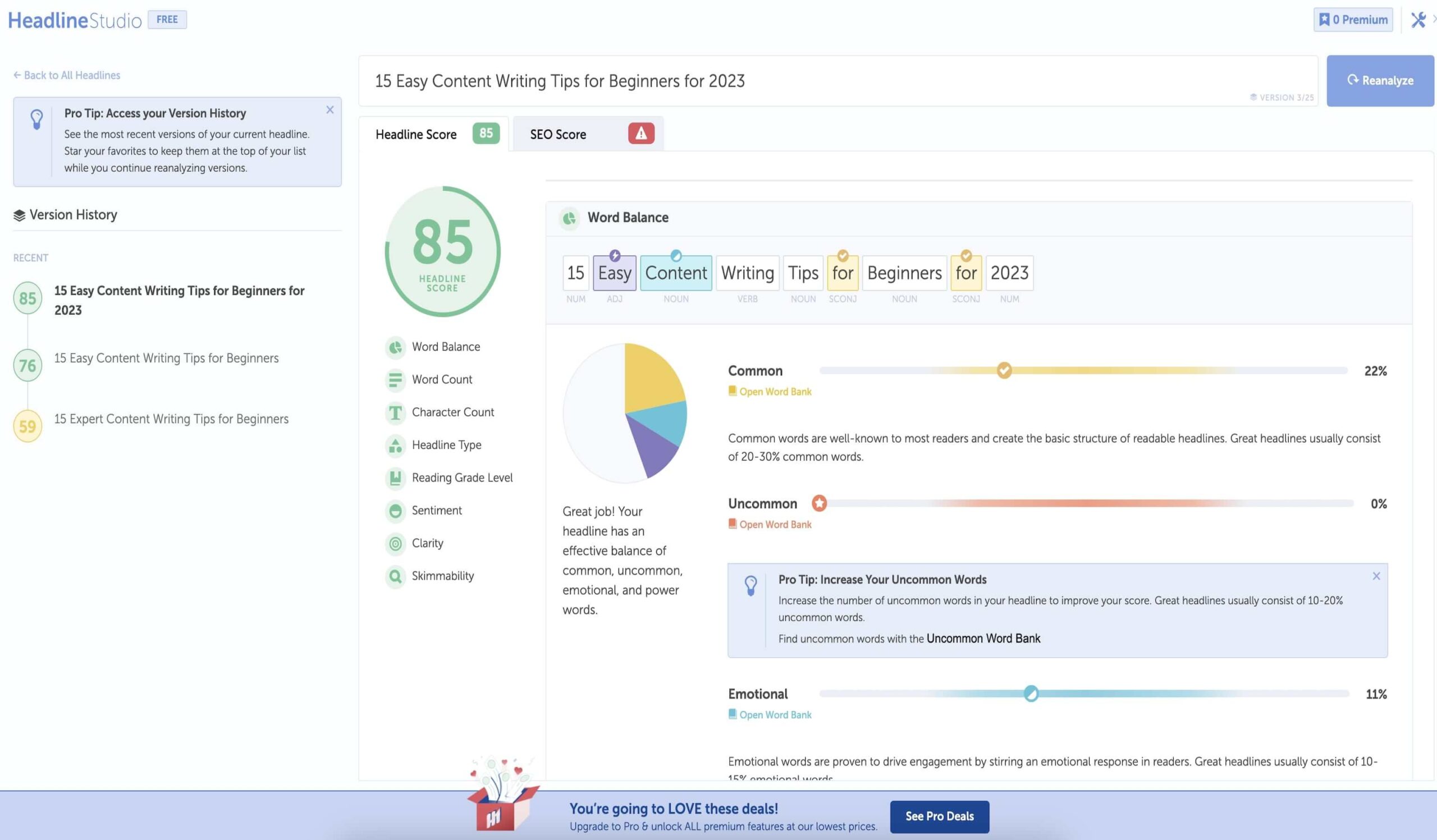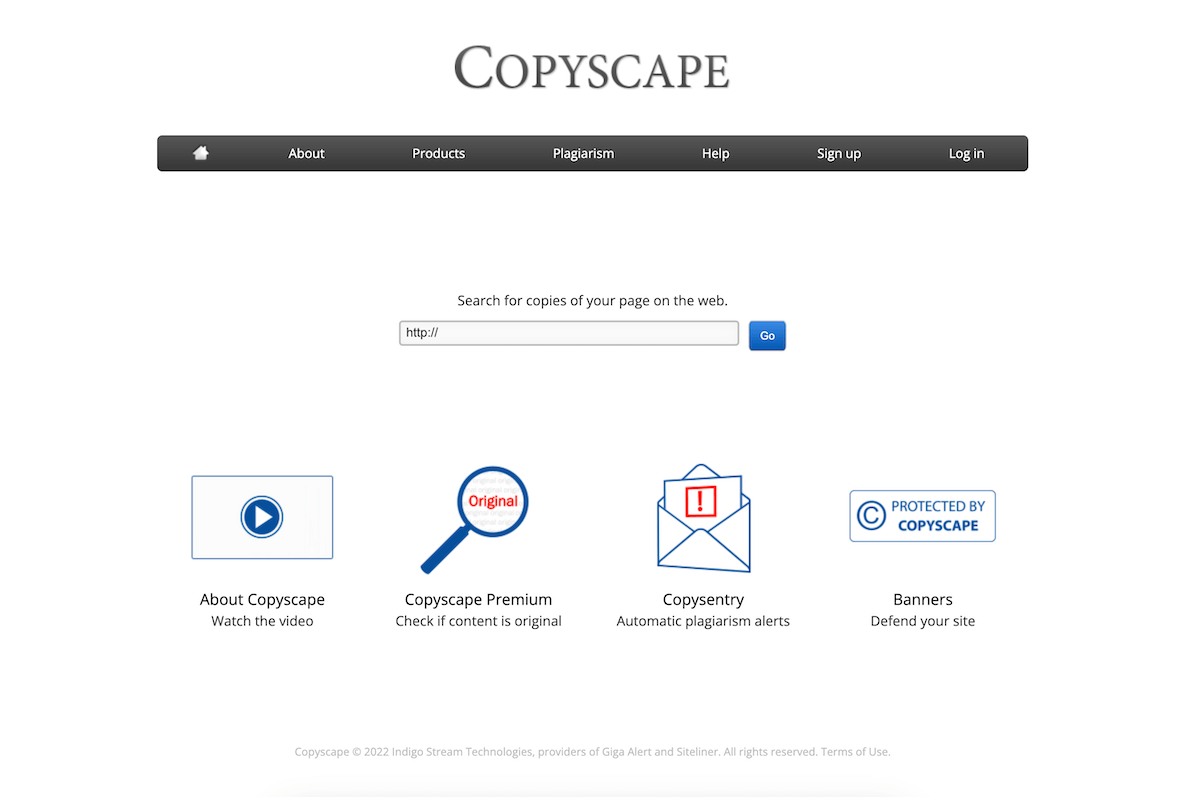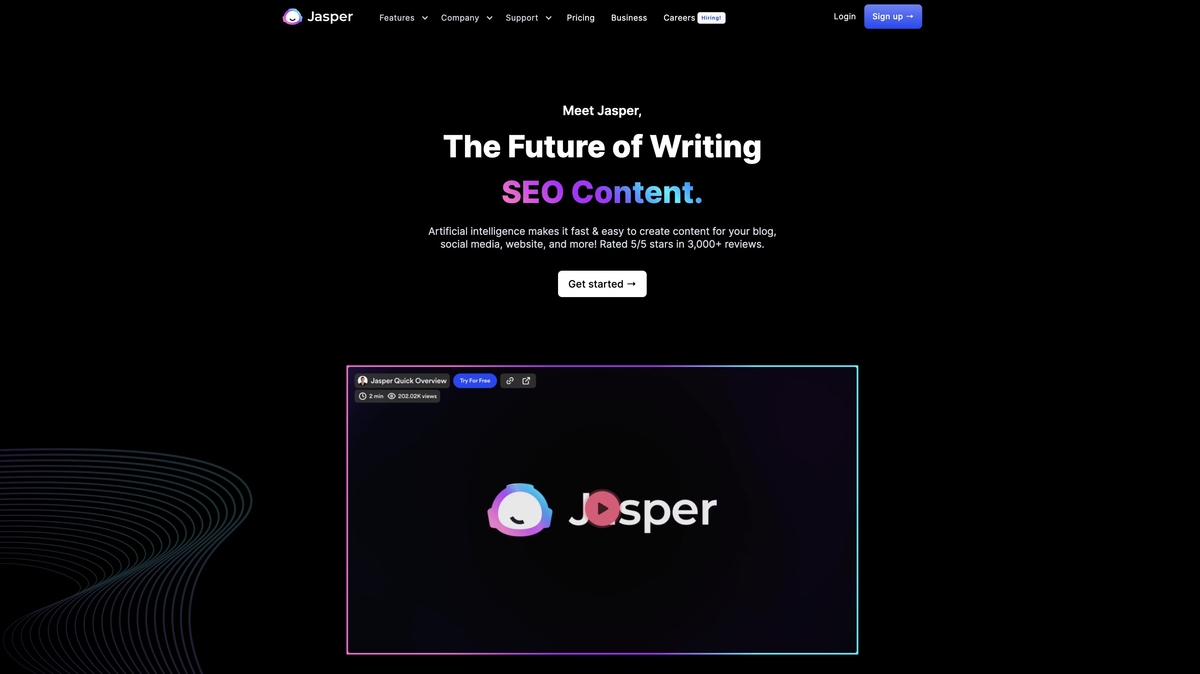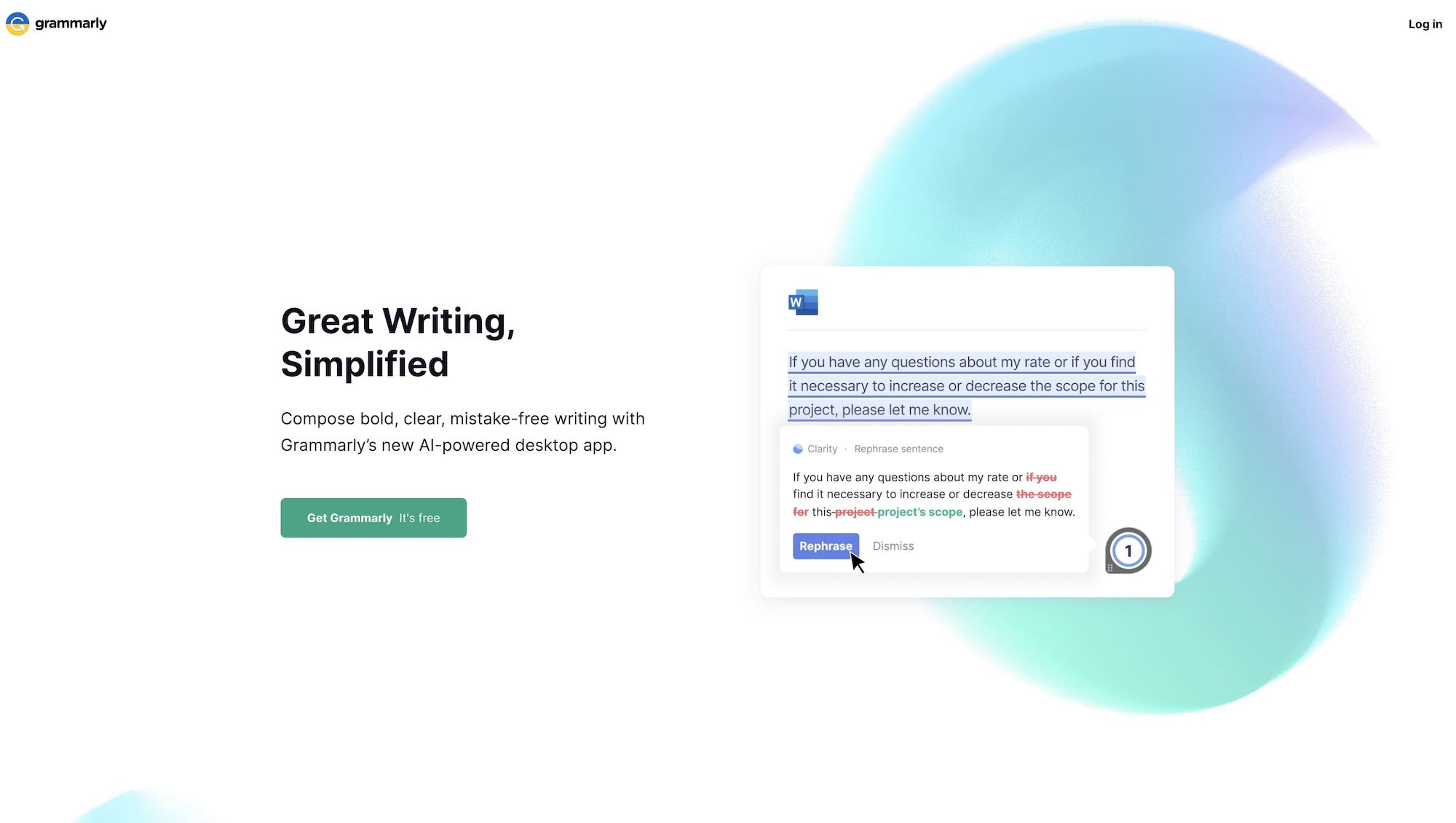Are you just getting started copywriting and looking to create high-quality content? Content writing is an essential part of marketing today.
No matter what industry you’re in or the topic, you always want the piece you create to rank high on search engines and get the reader’s attention.
And this is where these content writing tips for beginners come in.
Writing content isn’t simple – it’s an art. But luckily, you don’t have to be a talented wordsmith to craft persuasive pieces that engage and inform your readers.
Fortunately, thoughtful content is something that any writer – new or old – can achieve with the right tools and advice.
In this ultimate guide, we’ll go over 15 expert content writing tips for beginners to write a great blog post, understand what your writing style is, and eventually become a professional content writer.

Table of Contents ⬇️
Toggle15 Best Content Writing Tips for Beginners
Writing engaging content is essential to any successful website or blog. New writers often find that getting started can be the hardest part.
it’s difficult to know how to create content that captures readers’ attention and encourages them to read more.
Fortunately, with these 15 expert content writing tips for beginners, you’ll have what it takes to work confidently and create quality pieces every time.
Let’s get started.
Research the Topic
Researching a topic before diving into content writing should always be the first step. It is essential to understand a topic thoroughly before putting together any kind of material related to that subject.
Start by analyzing the topic, the target audience, and the content purpose. Also, consider the language that may be relevant for your target reader.
For example, the tone of voice and the words you’ll use writing a travel blog post or a sales copy will be totally different.
And you’ll understand it only by researching the topic and analyzing your competitors.
Researching helps ensure that your work is informative and engaging for your readers.
RELATED POST: How to Become a Freelance Copywriter

Write the Best Possible Headline
Creating a headline for your content is challenging and often underlooked, but it’s a key part to get people to click on your blog post, ads, and general copies.
As a beginner content writer, the most important advice to keep in mind is to grab the reader’s attention with one short punchy headline. Make sure the headline accurately reflects and summarizes what your content is about.
Don’t mislead readers with clickbait headlines; instead, focus on clarity and precision.
Also consider using power words such as “epic,” “unbelievable,” and “extraordinary” to add extra oomph and draw readers in quickly.
Building an effective headline for each piece of content will result in better readership and engagement with your work.
And to get more control over your headlines, I recommend using Headline Studio by CoSchedule, a free tool that gives you a score and recommendations on your current title.

Write Unique Content
Writing unique content for any given topic is crucial for success in the creative arena. To be a successful content writer, there are a few things that every beginner should keep in mind.
By coming up with unique and fresh ideas, you can create engaging content every time.
Firstly, it’s important to focus on readability – craft sentences that use everyday language so readers can easily understand your points.
Additionally, always proofread your work to ensure accuracy across spelling, grammar, and punctuation.
Finally don’t be afraid to be creative – research new ideas and inject a touch of personality into your writing!
Copying your competitors’ pieces is tempting but you won’t be rewarded for your own work and eventually even get penalized.
To check if your content is unique, you can use Copyscape, which scans millions of pages online and will tell you if your copy is copyright-free or not – and it’s cheap! So make sure to use it as soon as possible.
READ MORE: 20 Content Writing Tools You Must Have

Use Jasper AI
Content writing can be a challenge for beginners, but with the right tips and a touch of creativity, you will be well on your way to crafting engaging articles for any audience. One great tool to help is Jasper AI.
As any professional writer knows, the blank page can be daunting.
Faced with the pressure of coming up with something new and interesting, it’s not uncommon to feel like your creativity has dried up, even successful copywriters.
This feeling is often referred to as “writer’s block,” and it can be a major obstacle to productivity. While there’s no surefire cure for writer’s block, there are a few things that can help.
And the best one for me is using Jasper AI, a software that totally removes writer’s block, allowing you to craft content easily for all your copywriting clients.
While you still need to be creative and express your own ideas, Jasper takes it to the next level and writes amazing content for you.
And for only $59 a month, you’ll become a pro in no time.
Of course, to overcome writer’s block, you’ll have to take some time away from work and be patient. But when using Jasper, you can start content writing online immediately.
Try it out, they have a free trial.
Nowadays, using Jasper AI is essential to be a great copywriter – so join the team.

Prepare Your Outline
Outlining your content is one of the most important content writing tips that you should incorporate into your work. Taking a few moments to structure your ideas before you write can drastically improve the quality of the final piece.
A well-crafted outline clarifies your thoughts and focuses more on substance over style. Plus, it keeps your blog post organized and easy to follow for your readers.
To start, outline each main point (H2) and add subtopics (H3 and H4) to create an easy-to-follow narrative arc and logically flow from one section to the next.
From there, break down paragraphs into bullets and write content.
However, before you start writing a powerful outline, I recommend learning SEO (at least the basics) to have the highest chances of ranking on search engines.
RELATED GUIDE: How to Become a Copywriter – Ultimate Guide

Learn SEO
You might be wondering – I’m into writing, not marketing, so why should I learn Search Engine Optimization?
Well, most pieces you write will end up on a website or blog, and you want people to find that post on Google. And the only way to get on Google’s first page is to learn and implement SEO.
Learning SEO can feel daunting at first but with some dedication and guidance, you will be able to get your foot in the door and create content that is both search engine optimized as well as engaging for readers.
First and foremost, remember to write for real people and use SEO strategies as an enhancement of your natural strengths as a writer.
Check keyword density, keep your URLs organized, link out to authoritative websites, and optimize images – all these will come naturally if you focus on producing compelling.
Of course, you write for real people, so you should try to find the right balance between SEO-optimization and engaging text.
The best content writing courses to learn SEO are the SEMrush Academy and HubSpot Academy.
These are comprehensive, teach you everything you need to know, and even give you a certificate.
Apart from learning the basics, I recommend using SurferSEO, one of the best content writing tools on the market.

Understand Headings and Subheadings
If you’re just starting out with content writing, the one element you must understand to get your SEO structure right are headings and subheadings – technically called H2 and H3.
Headings and subheadings are available on Google Docs, Microsoft Word, and WordPress.
- Your post’s title should be H1 – and this is the only H1 you’ll use
- The main sections of your post must be tagged as H2
- The subtopics must be tagged as H3, H4, and H5.
Note that you will not always use H4, H5, and H6 headings as those are reserved for long copies and pillar content, but you should always use H2 and H3 headings.
You must ensure that your target keyword appears in some of them, as these will help search engine optimization and draw readers in.
Getting these right contributes significantly to how appealing your content appears on search engines.
For content writers, this is essential for bringing traffic to your page!
Additionally, good content writing takes more than just including the correct heading and subheadings; you need to be strategic about where they appear in the article so that it reads well from start to finish.
Plus, when your readers click on the table of content, all sections will be organized and easy to follow.

Add Bullet Points and CTAs
Adding bullet points and CTAs (calls to action) are two of the best ways to spice up your written work.
Not only do they provide a visual break from the text – bullet points make it easier for readers to scan through and pick out highlights of your message quickly.
On the other hand, adding CTAs lets you be proactive about what you’d like readers to do once they’ve read your content.
Don’t be afraid to get creative; use powerful words in any call-to-action phrases and let the great design do its magic.
But perhaps most importantly – choose bullet points or CTAs that are relevant to the subject at hand so that readers won’t feel misled. With bullet points and CTAs, juniors can master the art of great content writing in no time!

Don’t Write Walls of Text
This goes hand-in-hand with the paragraph above – Writing isn’t just about having a good idea, it’s about presenting those ideas in an accessible way.
One way to make sure that your content is reader-friendly is to break up your information into concise, bite-sized pieces.
If you can manage to limit each paragraph to four sentences or less, you’re golden.
This makes it easier for the reader to digest the information and creates a stronger sense of flow that gets the reader from one concept to the next.
And if you can’t find any natural spot to add a list, bullet point, or CTA, then an image will do and keep the readers entertained.

Avoid Repetitions
Another important element you should consider when writing content, may it be a blog post or a sales copy, is to avoid repetitions.
Not only does it make your piece sound boring, but too many repetitions distract readers from your main point. For instance, while describing something in detail, try not to reuse similar phrases or words again and again.
Instead, come up with various ways to explain it in one go. You can also utilize other resources, such as synonyms, metaphors, or analogies, to form more comprehensive and creative sentences that will grab the reader’s attention.
When in doubt, you can always check Thesaurus and its never-ending list of synonyms and antonyms, which is of massive help as a writer.

Understand the Types of Tone of Voice
For business and creative writing, understanding the types of tone of voice is essential for making your text engaging.
And the tone of voice changes whether you write for CEOs, travelers, or doctors, and it’s your job to adapt it to make the copy interesting for each audience.
Also, this means choosing from among a style’s options – formal or informal, direct or indirect. Even when using the same form of address, phrases can have different meanings based on the context and underlying tone.
Aspiring writers should practice using different tones so they become familiar with which words work best under what situations.
I can’t stress it enough – getting a content writing course is instrumental to learning writing skills and improving your existing ones.
By doing this, you can make professional and relatable pieces that capture your audience’s attention.

Give Examples and Add Facts
For beginners to content writing, it’s important to give tangible examples and focus on facts. This helps the reader better understand the points that are being made.
For example, if you’re writing about a new product launch, provide facts about the features, reliability, durability, and cost to help demonstrate why it would be an attractive option for the reader.
Also, research your topics thoroughly so that readers can trust the accuracy of your content. Adding facts from authoritative sources helps prove your point and gives you more credibility.
To give you an idea, if you’re writing a blog post about digital marketing, adding some stats or facts from HubSpot or SEMrush gives, in turn, more authority to your piece.

Add Internal and External Links
This goes hand in hand with the section above.
As a starter, you should never underestimate the importance of incorporating internal and external links into your copy.
Internal links are important because they allow readers to navigate through your website more easily, thus increasing user experience.
Plus, they help Google and other search engines understand that you have experience in that niche, hence ranking your articles higher in search results.
External links, on the other hand, offer additional information to readers and provide credibility to the content being written.
Make sure that all external sources are reputable and accurate by researching them thoroughly before including them in your content (high Domain Authority is your friend here).

Proofread the Content Using Grammarly
One of the most important tools you can use as a beginner is Grammarly, and you should use it when working with clients or on your own pieces.
It checks for grammar and spelling errors and gives you a score from 0 to 100 based on grammar, typos, tenses used, and more.
You’ll want to correct mistakes and typos before publishing; otherwise, readers may get confused with your piece or not properly understand what you mean, which is critical to keep them engaged.

Keyword Research
Researching your keywords is an essential step if you want to be writing blog posts that your audience will actually see.
Let’s face it – you can create the best piece ever, but if no one is interested in that topic, then no one will find it.
I recommend using KeySearch to find relevant keywords and target the right content for your client’s website or your own.

Content Writing Tips – FAQ
Is Content Writing Hard?
Yes, content writing is indeed hard, especially when you take on pieces that you don’t know anything about or you have no interest in.
I’ve worked as a freelance copywriter for years and I found myself writing posts about supply chain, finance, health, and others, that I initially had no idea about.
But, with some research, I managed to create good pieces that eventually ranked well on Google.
Also, credit where credit’s due, Jasper AI has helped me tremendously in creating content, no matter the topic, and I highly recommend you give it a shot
Is Content Writing a Good Career Path?
Definitely, content writing can be an incredibly rewarding career path.
Content writers play an important role in the media and news industry, writing stories to communicate relevant information to audiences.
Of course, it’s a career path that may appeal to those who have a natural affinity for writing. Although positions in content writing can vary, there is generally the opportunity to specialize in certain areas like journalism, technical writing, or copywriting.
I recommend only applying to jobs and gigs that you actually feel interested in.
If you have no interest whatsoever in tech topics, for example, then avoid those and focus on brands that you can actually connect with.
Is Writing Content Stressful?
Just like any other job, content writing can be stressful. When you are assigned a topic that you have no knowledge of, it can become even more challenging to craft an engaging copy.
Despite the challenge, taking time to research the topic and familiarizing yourself with the jargon can help create better content.
It also helps to break down the big tasks into smaller chunks and set realistic goals so that you don’t feel overwhelmed by the outline.
Where to Find Content Writing Jobs?
The best platforms to find copywriting gigs and jobs are Upwork, Fiverr, Jooble, WeWork Remotely, and Dynamite Jobs.
Should I Have a Content Writing Portfolio?
A content writing portfolio is essential for anyone looking to become a professional content writer.
Having a portfolio demonstrates your expertise and experience, showing clients that you have the writing skills necessary to create relevant content for them.
Also, when you showcase your best work in one place, it can give potential employers a great overview of what you offer as a writer.
It’s worth noting that short articles and blog posts make 83% of the type of content mostly used by B2C marketers, according to the Search Engine Journal.
For this reason, make sure to a bunch of those in your portfolio.
Conclusion
Content writing is an essential skill for any digital marketer and writer today. With the right strategies and tactics, you can create powerful writing that captivates your readers.
These were the best content writing tips for beginners that you should incorporate in your workflow.
Remember to focus on finding stories that resonate with your audience, craft content around important keywords, and break up dense paragraphs with headlines and images.
Don’t forget to mind your grammar – it’s the very foundation of written communication! Finally, be sure to tie in your reader’s pain points and concerns into your content to make it more meaningful.
Thanks for sticking until the end and, if you have any suggestion, leave a comment here below!






